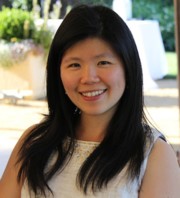Scientist profiles A-F
SRI profiles

Cross-appointed scientist
Sunnybrook Health Sciences Centre
2075 Bayview Ave., Room M6 176
Toronto, ON
M4N 3M5
Education:
- B.Sc., 1999, physical therapy, McGill University, Canada
- PhD, 2008, neurological sciences, McGill University, Canada
- Postdoctorate, 2011, experimental psychology, FMRIB Centre, University of Oxford
- Postdoctorate, 2012, Beth Israel Deaconess Medical Center, Harvard Medical School
Appointments and Affiliations:
- Scientist, Evaluative Clinical Sciences, Hurvitz Brain Sciences Research Program, Sunnybrook Research Institute
- Assistant professor (status appointment), department of physical therapy, faculty of medicine, University of Toronto
- Associate member, Rehabilitation Sciences Institute, U of T
Research Foci:
- Motor stroke recovery
- Motor skill learning
- Music-supported rehabilitation
- Neuroimaging
- Brain stimulation
Research Summary:
Laboratory for Promoting Upper Limb Stroke rEcovery (PULSE)
The PULSE lab aims to develop and validate novel therapeutic interventions that facilitate the recovery of arm and hand movements after stroke.
One area of research focuses on the application of noninvasive brain stimulation, such as transcranial direct current stimulation, to augment recovery of movements. Transcranial direct current stimulation is a promising approach because it can prime brain cells, which may then enhance the brain’s capacity to relearn how to move again.
A second area of research aims to understand how we can harness music to improve mood and movements after stroke. We listen to music because of the way it makes us feel—who has not had the urge to sway their hips when listening to a samba tune? Understanding the links between music, mood and movement may help us devise novel and fun interventions for stroke recovery.
We use techniques that include behavioural testing, neuroimaging (e.g., magnetic resonance imaging) and noninvasive brain stimulation. These approaches allow us to understand better how a stroke has affected the brain’s capacity for recovery, to determine biomarkers that may predict recovery and to elucidate the neural mechanisms that might underlie recovery.
Selected Publications:
See current publications list at PubMed.
- Fujii S, Lulic T, Chen JL. More feedback is better than less: Learning a novel upper limb joint coordination pattern with augmented auditory feedback. Front Neurosci. 2016 Jun 6;10:251.
- Chen JL, Schlaug G. Increased resting state connectivity between ipsilesional motor cortex and contralesional premotor cortex after transcranial direct current stimulation with physical therapy. Sci Rep. 2016 Mar 16;6:23271.
- Chen JL, Fujii S, Schlaug G. The use of augmented auditory feedback to improve arm reaching in stroke: a case series. Disabil Rehabil. 2015 Aug 28:1–10.
- Chen JL, Kumar S, Williamson VJ, Scholz J, Griffiths TD, Stewart L. Detection of the arcuate fasciculus in congenital amusia depends on the tractography algorithm. Front Psychol. 2015 Jan 21:6:9.
- Chen JL, Schlaug G. Resting state interhemispheric motor connectivity and white matter integrity correlate with motor impairment in chronic stroke. Front Neurol. 2013 Nov 7;4:178.
Related News and Stories:
- Women in science: a lab of their own: Successful female scientists reflect on their journeys and offer counsel to the next generation looking to them and wondering: Is it possible to have it all? (SRI Magazine, 2018)
- Brain stimulation plus rehab equals better mobility after a stroke: Gentle electric current applied through the head helps patients regain some function (SRI Magazine, 2016)


